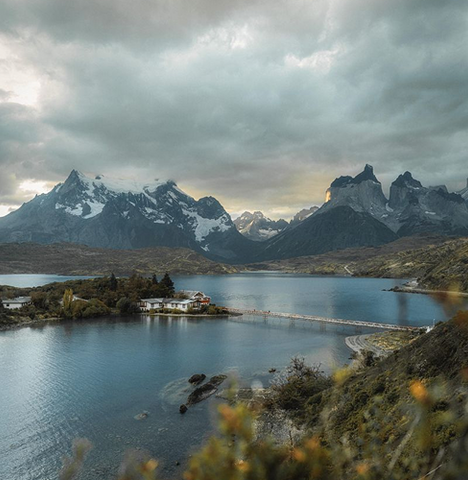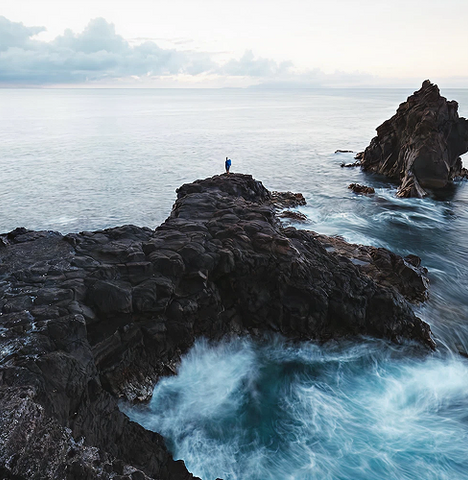October 03, 2022

It was a full house but you could hear a pin drop as M. David Mullen ASC scrupulously explained the cinematic art and gymnastics that went into a single sequence in runaway hit The Marvelous Mrs. Maisel.
" ... with a light bulb next to every actor's head, no matter what filter, I kept trying different diffusion filters, and they all just bloomed way too much—your eye just went to the bulb. I went to the Tiffen Black Diffusion FX filter because it has almost zero halation for a diffusion filter, so it was just enough to soften, the way the show is supposed to look, but without getting a flurry effect."
- M. David Mullen ASC
Along with Robert McLachlan ASC, CSC, Nancy Schreiber ASC, and moderator, Jay Holben, the filmmakers took to the stage at the new Helen and Nat Tiffen Educational Center in Burbank California. In turn, each cinematographer screened footage from a recent project and delved into the challenges and intricacies that made it a stand-out scene.

M. David Mullen ASC: The Marvelous Mrs. Maisel
All eyes were glued to the stage as Mullen unraveled the technology, collaboration, and maneuvers behind some of his how-did-he-do-that scenes that had been carefully orchestrated with the show's writer/director Amy Sherman-Palladino. "Amy will take what was supposed to be a simple Steadicam move, and find a way to make it harder. But she creates so much energy by these 180, 360 flips she does."
Delving into the much-talked-about one-take switchboard scene that launches season 2, he explains how the Steadicam shot morphed into a camera frenetic sequence with an array of tech tools including a "MoVI which was the only way to actually get the camera between the faces and the wall."
To get the job done, Mullen has assembled a stellar think-out-of-the-box camera crew including legendary A Camera/Steadicam/MoVI Operator, Larry and Jim McConkey A Camera/Steadicam Operator. The team has done something right. During their 4-season stint, thus far Mullen has garnered Best Cinematography nominations each year and taken home 2 Emmys.

Nancy Schreiber ASC: P-Valley
From images of the burlesque house on Season 4 of The Marvelous Mrs. Maisel to the Pynk gentlemen's lounge on P-Valley, next up was pioneering cinematographer Nancy Schreiber, ASC. Her rich saturated visuals from the pilot and Season 1 of P-Valley, were shot at Tyler Perry Studios in Atlanta GA. "P-Valley is set in Mississippi in a small town that's seen better days," she says.
"We really tried to get a diverse crew. It was amazing that all the directors were women. My camera crew consisted of 11 people, six of whom were women and women of color. Both our dolly grips were African American. My key grip, Ray Brown, I will just say that he's not 25! In case anyone wonders, there is an ageism problem out there."
The tough part to crew-up with diversity was electric. "The few women electricians in Atlanta were busy. But I came up through electric, so I said, " I cannot do this show, unless we find a woman." And we did find someone, Ellie Evans, who's still part of the crew. And she got really great with the DMX on her iPod. The Showrunner, Katori Hall is an acclaimed playwright. She's the only woman, and certainly woman of color, to win an Olivier Award. She had never worked in television, but got this series off the ground, and she wanted it gritty."
Glass was the answer and Schreiber pulled out all the stops to satisfy the showrunner, shooting Alexa Mini at 1400 ISO. She went to Panavision Hollywood for detuned lenses, "all those primes that you didn't want, that weren't Primos, the Super Standard Speed, Super Speeds, you name it. And we got all the anti-glare coatings off. We had three different levels of primes: subtle, medium, and extreme de-tuning. Anything flary, blown out, Katori loved."
 From 'P-Valley'
From 'P-Valley'
She got used to thinking out of the box and dug up a cracked diopter—just the thing to capture fragmented life of one of the pole dancers. Other times, in the name of controlling the look in camera, she went extremely desaturated using Tiffen Pro Mist one. Other times she would pull out a Lens Baby. And when shooting with two 11x1 zooms for the dance numbers she would put on Smoque filters, because she knew they would hold her look and always match.

Robert McLachlan ASC, CSC: Game of Thrones
Crafting Game of Thrones is a monumental undertaking and the next panelist, Rob McLachlan ASC, CSC was Director of Photography on 8 of the mega episodes. He brought shots and the back stories to go with one of his biggest challenges in episode 4, season 7. There were 200 dress solders, 50 horses, a dragon, lots of real fire with smoke and soot to go with it, in addition to keeping the producers happy.
McLachlan set up the scene with background on how the season's pre-shoot workflow progressed after they landed in Belfast in July for the 10-episode season.
"There were five teams of a director, a DP, and an AD, and you'd each do two episodes. We were all there at the same time, which was a rare opportunity for all of us. There was the DP room and at least initially there'd be five DPs all together in the room, all scratching our heads trying to figure out how we were going to solve our problems. And there's a lot of wondering how the hell we were going to manage to pull this off. But there was a lot of give and take and it was really productive and a nice way to get into the show."
They'd jump into the sequence, break it into beats, then shots from the beats. From there they would do the storyboards because that's what the visual effects department needed.
His biggest concern? "How am I going to keep a sequence that is going to photographically take 15 minutes to watch, but 16 days to shoot—all looking the same? It was December in Spain when we didn't have light until 8:30 in the morning and it was gone by 4:30 in the afternoon. To that end, we were scrambling all day long every day."
Action ruled. "There were no fake horses, no fake horse-riding. It was all real actors on real horses being tracked," McLachlan added. "I would say 80% of the fire you see is practical. They went in months ahead and plumbed the entire battlefield with propane lines and had steel wagons built for after they'd all been lit aflame. They were all plumbed with pilot lights so when we were ready to go, they'd turn a switch to turn the fire on and off. Everything stayed the same and consistent. It was really great."
 From 'Game of Thrones'
From 'Game of Thrones'
Frequently, I would just pull all the filters out, other than NDs as needed, because the directors and none of us felt like we had time to even take 30 seconds to fiddle around with the filter to try an angle it or something, because if you had a kick in it—they really, didn't like that stuff. Other times, when dealing with trying to pretty up the ladies if it was needed, I did use light Glimmer and occasionally other filters on the show, but for the action sequences outside, those were all shot clean.
The great Jay Holben brought the evening to an end, adding: "The work is extraordinary. Just thank you for sharing your time and for being part of this. Thanks for Tiffen for hosting us and for all of you for showing up, otherwise we're just up here, nerding out all alone."
See highlights from the 'That Shot & How I Got It' below:
The Tiffen Company, thanks Videndum Production Solutions, and Creative Solutions for joining forces to present this in-person evening of cinematic conversation with peers and pros.
Want to stay up to date on the latest news in the world of Tiffen? Subscribe to our Monthly 'In Focus' Newsletter here.



